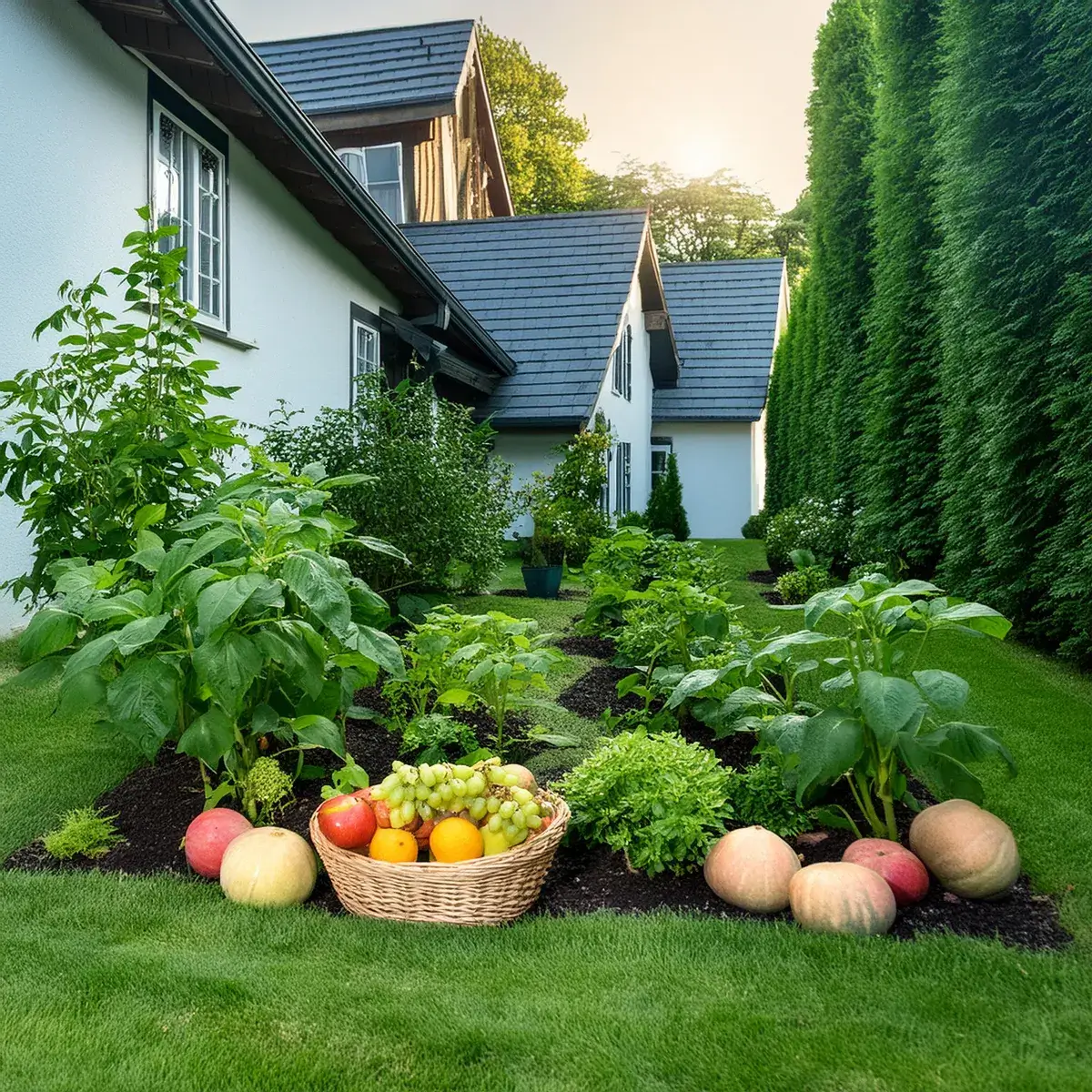Are you prepared to enhance your proficiency in gardening to an advanced level?
The fundamental principles of seasonal gardening will be delved into, elucidating the significance of climate and soil in your gardening pursuits.
Discover the optimal plant selections for cultivation in the spring season, endorsed techniques for watering and upkeep during the summer months, suitable plants for planting in the fall, and methods for prepping your garden for the winter season.
Prepare yourself to elevate the quality of your gardening endeavors!
The Basics of Seasonal Gardening
The practice of seasonal gardening involves utilizing a range of strategies that are tailored to correspond with the evolving seasons, enabling gardeners to optimize the growth and vitality of their plants over the course of the year. By comprehending the core principles pertaining to climate and soil conditions, gardeners can adequately strategize their garden planting timelines and employ optimal gardening practices to secure a plentiful harvest.
Understanding Your Climate and Soil
A solid comprehension of your climate and soil conditions serves as the cornerstone of successful gardening, as it influences the suitability of plant species for your garden. Different climate zones exhibit diverse temperature ranges, levels of humidity, and precipitation patterns, all of which are pivotal in determining the outcomes of your gardening initiatives.
For example, plant species well-suited to a tropical climate may struggle to thrive in a temperate climate. Equally critical is soil preparation, given that the pH levels and nutrient composition of your soil directly impact plant development. Before planting, it is imperative to conduct a soil analysis to evaluate these factors. Modifying the soil through the incorporation of organic matter or fertilizers can establish an optimal growth environment for your plants.
Spring Gardening
The commencement of spring gardening signifies the onset of the growing season, a period characterized by the garden’s vibrancy with colorful blooms and fresh growth. It is imperative for gardeners to prioritize the cultivation of seasonal flowers and vegetables that thrive in the moderate and revitalizing climate of spring.
Best Plants to Grow in Spring
Spring presents an opportune period for the cultivation of a diverse range of vegetables and seasonal flowers that are best suited to the cool and moist soil conditions.
During the early spring season, vegetables such as peas, lettuce, and radishes are known to thrive. Peas should be directly sowed into the soil, with rows spaced at intervals of approximately 18 inches. Lettuce seeds, on the other hand, should be thinly scattered and gently covered with soil, ensuring adequate water and sunlight exposure. Radishes, which favor loose and well-drained soil, are ideally planted in rows with a spacing of 4-6 inches.
As spring progresses, the consideration may shift towards the planting of tomatoes, peppers, and zinnias. Tomatoes necessitate warm soil and a location abundant in sunlight, requiring a spacing of 2-3 feet between individual plants. Similarly, peppers thrive in well-drained soil and sunlight, warranting a spacing of 18-24 inches apart. Zinnias, being easily cultivated annual flowers, flourish in full sun, with an optimal spacing range of 6-12 inches.
Preparation and Planting Tips
Effective planning is essential for a prosperous spring garden, encompassing a sequence of vital gardening activities. Tilling the soil stands out as a critical measure in soil preparation, serving to loosen compacted soil and enhance its aeration. Additionally, incorporating compost enriches the soil with crucial nutrients, establishing a fertile environment for plant growth.
In terms of planting, direct seeding into the ground is advisable for crops such as carrots, radishes, and lettuce, whereas transplanting seedlings proves advantageous for vegetables like tomatoes and peppers. Creating a planting timetable aligned with the frost dates in your region can significantly enhance growth and yield, ensuring optimal planting times are adhered to.
Summer Gardening
During the summer season, there is a notable surge in growth and productivity within the garden, underscoring the importance of carefully selecting appropriate plant species and employing effective cultivation methodologies. Given the elevated temperatures and fluctuating moisture levels characteristic of this period, gardeners are required to modify their approaches to guarantee the robust health and successful yield of summer crops.
Recommended Plants for Summer
- Among the vegetables that are particularly well-suited for planting during the summer are tomatoes, peppers, cucumbers, and zucchinis. These plant varieties exhibit optimal growth in conditions of ample sunlight exposure and necessitate well-drained soil to prevent water saturation. Consistent watering is imperative, especially during periods of elevated temperatures, to facilitate their development.
- Heat-resistant cultivars like okra and eggplants offer an advantageous selection for summer cultivation, as they demonstrate resilience to high temperatures and minimal water requirements. Opting for drought-tolerant varieties such as sweet potatoes and beans enables the cultivation of a plentiful harvest even in arid conditions.
Watering and Maintenance Strategies
During the summer months, effective watering and garden maintenance are imperative to ensure the continued health and productivity of plants.
When addressing the task of watering a garden in the summer season, it is essential to apply water deeply but infrequently to promote robust root growth. Optimal times for watering include early mornings or late afternoons, as this minimizes evaporation loss. The utilization of drip irrigation or soaker hoses can effectively target water directly to the roots, maximizing water use efficiency.
Mulching around plants serves to retain moisture and inhibit weed growth. Additionally, regular weeding is critical to diminish competition for water among plants.
Vigilance in monitoring for pests and diseases is advised, with prompt action required to safeguard plant health.
Proper care of plants in hot weather extends to measures such as providing shade, utilizing sunshades, and implementing organic mulch to insulate the soil and sustain adequate moisture levels.
Fall Gardening
The autumn season presents a distinct opportunity to capitalize on the cooler temperatures and augmented rainfall for cultivating a diverse range of crops. This time of year is particularly conducive for sowing vegetables and other flora that flourish in cooler climates, enabling one to prolong their harvest well into the autumn months.
What to Plant in the Fall
The autumn season presents an opportune time for the cultivation of cool-season vegetables and resilient plants that thrive in the moderate climate.
As temperatures gradually decrease, the onset of autumn heralds an ideal period to engage in gardening activities. Noteworthy plants for cultivation during this season encompass kale, broccoli, carrots, and radishes, all of which promise a rich bounty come harvest time. These vegetables flourish in the cooler temperatures characteristic of autumn and offer a delectable array of nutrient-rich produce.
Conscientious planning is paramount when establishing a fall garden, necessitating a thorough comprehension of the specific planting schedules for each variety of vegetable or perennial to ensure optimal development. Commence by enriching the soil with organic components to furnish essential nutrients for plant growth. Additionally, the application of a layer of mulch serves to foster moisture retention and regulate soil temperature. Proper planting methodologies, including considerations of spacing and depth, are pivotal for the successful cultivation of a fall garden, thereby warranting adherence to the recommended guidelines for each plant species under cultivation.
Preparing for Winter
Preparing the garden for winter necessitates essential seasonal maintenance tasks aimed at safeguarding plants and soil integrity.
Throughout the winter period, the focus should be on mulching garden beds to provide insulation for the soil and regulate temperature fluctuations. Pruning trees and shrubs is recommended to stimulate healthy growth during the forthcoming spring season. Additionally, it is advisable to shield perennials from inclement weather conditions by covering them with mulch or burlap.
Effective plant care in winter involves reducing watering frequency while ensuring deep watering to prevent root rot. Proper storage of gardening supplies and tools in a dry, sheltered location will not only prolong their lifespan but also maintain their quality for subsequent growing seasons.







